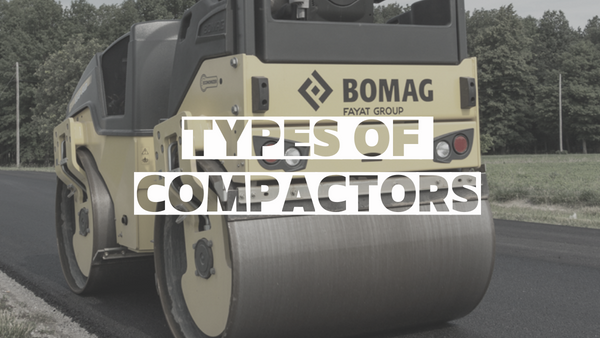Types of Compactors Used in Construction
The construction industry is full of many types of machinery, all of which may seem almost alien to the outside world. One category in particular which can seem more confusing than others is compactors or methods of compaction. Compaction on a construction site is integral to providing a flat base for buildings, construction foundations, pavements, roads and other construction structures to build on. The process of compaction increases the density and decreases the permeability of the ground. Therefore, to help get a better understanding of the types of compactors and what’s available, here is an article to help you.
What is a compactor?
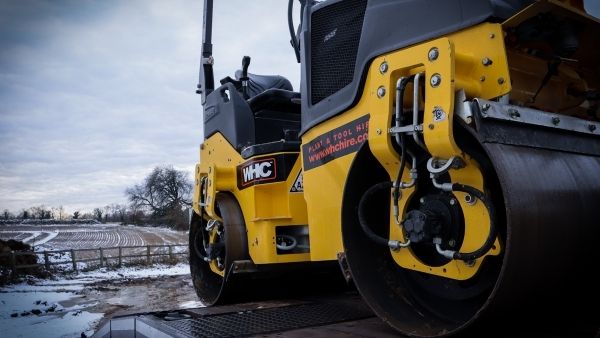
A compactor is one of the most used pieces of equipment on a construction site. They come in all different shapes and sizes, some of which are small enough to fit in a standard car, others require an artic lorry to transport them. All types of compactors help operators compress and increase soil strength by reducing its void ratio and the amount of water that can pass through it. As a result, the more compact your soil, the stronger it is to construct on. All compactors are used for:
- Increase bearing capacity
- Increase durability
- Increase resistance to deformation
- Decrease frost damage
- Increase stability
- Decrease permeability
Soil types can play a massive role in the amount of compaction you need to complete before building. However, this will prevent unexpected soil movement later on in the future. Soil movement can be devastating for the overall construction of the build. It leads to terminal cracks within a building and in underground piping under roads. To successfully compact soil and avoid problems in the future, quality compaction equipment is essential.
Who uses a compactor?
Several types of different tradesmen use a compactor. Construction companies, civil engineers, ground workers, landscapers and even DIYers are just a few examples. They are used in nearly every phase of construction, from subsoil preparation to the setting of block pavers towards the finishing stages of a project. They are ideal for compacting hardcore/MOT, or to compact soil which is either imported or moved from a different location. Additionally, these machines require a licence holder to operate legally. On construction sites, you will need to provide an operator competence certificate to use.
Types of Compactors
Plate Compactor- Wacker Plate
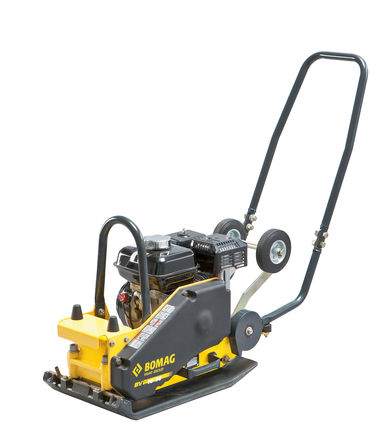
A plate compactor or wacker plate is one of the most essential pieces of building equipment used for the compression and compaction of different types of soil, and sand. These machines are the smallest options available on the market to use on paths, walkways or anywhere a rolling machine cannot reach. Most designs consist of a large, heavy steel plate that is found on the base of the device. Plate compactors vary in size, strength, and mechanism of action. Some machines are simple enough to transport, however, others can range in weight over 50kg. As a result, it takes more than one person to safely move the machine by hand.
Trench Rammer
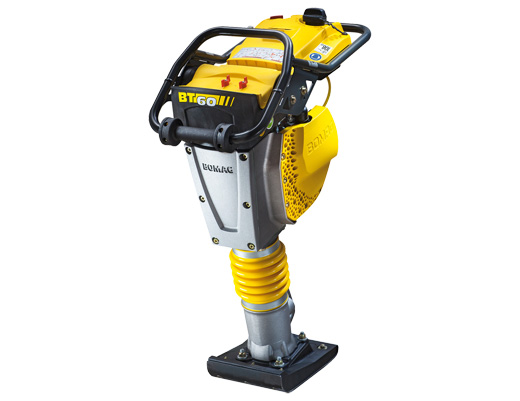
A trench rammer is a lightweight, compacting tool, operated by a single individual in a tight space. During operation, the rammer uses vibrations to compact the ground that you are working on. The high-impact force of a trench rammer allows operators to compact smaller areas at one time. This type of compactor is ideal for the construction of roads and pavements.
Vibratory Roller
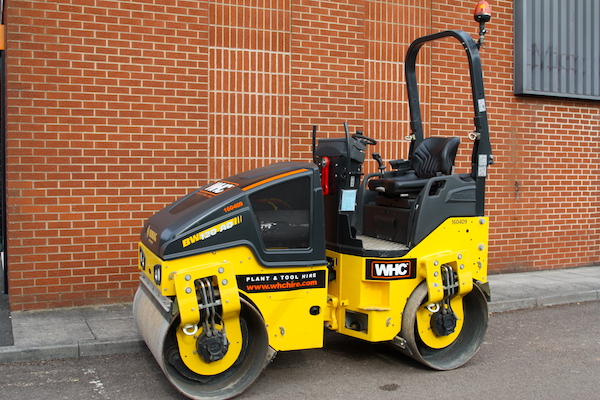
Vibratory rollers, also known as road or asphalt rollers, are classed as heavy-duty compactors. These rollers consist of large steel drums sat the front and rear of the machine. Their motors, which are located inside their drums, produce the vibrations required to compact all different materials, rock and soil. Vibratory rollers range from 1 tonne, up to 17 tonnes, depending on a project’s requirements. Models are available in either a fixed or articulated chassis, depending on the manufacturer. This type of roller is favoured for the construction of roads, car parks, or large areas.
Important Safety Information when using a Compactor
Compactors are extremely useful pieces of equipment and, as we have already seen, are vital to any construction project. While all manufacturers will integrate several safety features into the machines to assist operators, the duration and manner of use can have long-lasting effects on the user. Whether you are a business or looking to operate a compactor yourself, it is important to use the equipment correctly and be aware of how to protect yourself.
Always choose the right compactor for the job.
Plate– Small jobs where rollers cannot reach. Great for landscaping, pathways, foundations, etc.
Trench– Small confined space work, footings, repair work, etc.3
Vibrator roller– Large-scale compaction, building sites, roads, etc.
Personal protective equipment for compactors
If require the use of a compactor, you need to ensure that you protect yourself or your staff during the operation of the machinery. Goggles, a dust mask, gloves and adequate ear protection. During operation, users will be exposed to a level of vibration on handheld machines. It is your duty as a business owner to monitor the levels of exposure that each staff member is exposed to. Hand and Vibration Syndrome can be caused by the overuse of vibrating machinery. Therefore, it is important to protect yourself from long-term damage by ensuring the equipment is tested regularly.
Where can you hire different types of compactors?
WHC Hire Services have been supplying the highest quality compactors to business, tradesmen and the public for over 25 years. With regular investing in the quality of our equipment, we can deliver the latest and safest machinery available on the market. WHC Hire is a 5-time gold award winner from ROSPA for its attention to detail towards vibration exposure. All our equipment is regularly tested on-site in our state-of-the-art HAVS testing workshop. No matter the size of the company, we have a solution to protect your employees from overexposure to vibrations. Our mission is to provide the latest and safest machinery, on time and in perfect working order. To find out more information about the compactors we offer, click the link below.

